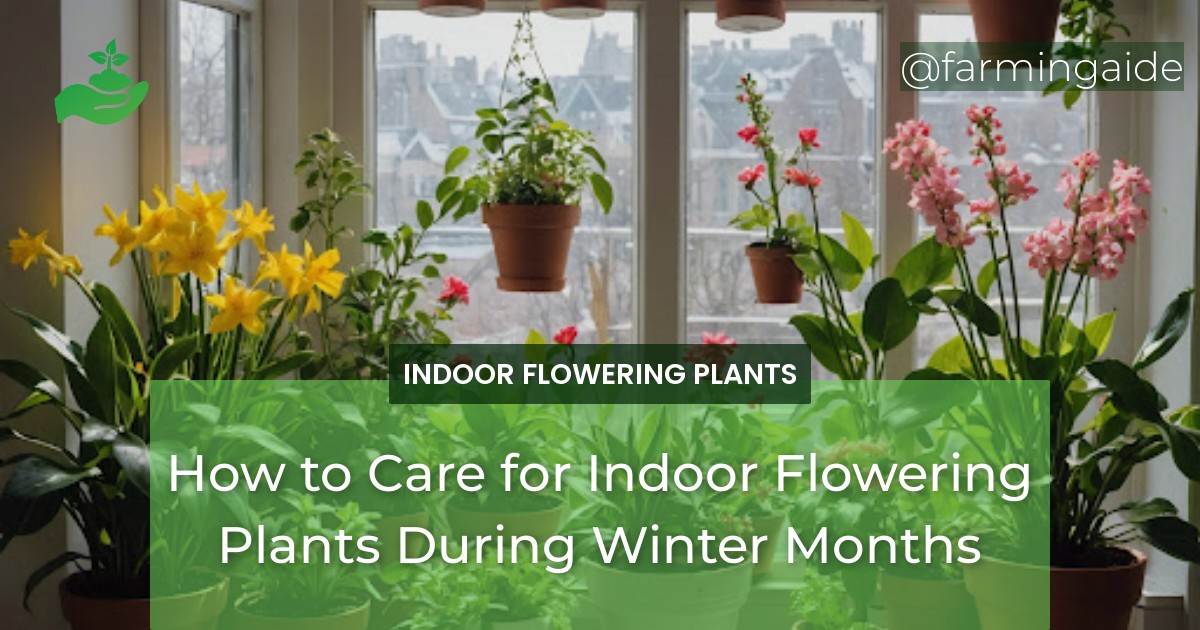As the winter months approach, many of us tend to neglect our indoor flowering plants, thinking they can survive on their own. However, this couldn’t be further from the truth. Indoor flowering plants require special care during the winter months to thrive. In this article, we’ll explore the key takeaways for caring for your indoor flowering plants during the winter, from understanding their needs to creating a suitable environment, watering techniques, fertilization, pest prevention, and pruning.
Key Takeaways
- Understand the specific needs of your indoor flowering plants during winter.
- Create a suitable environment with controlled temperature, humidity, and light.
- Adjust your watering techniques to avoid overwatering.
- Fertilize your plants during winter to promote healthy growth.
- Prevent pests and diseases from infesting your plants.
- Prune your plants to maintain their shape and promote new growth.
Understanding Your Indoor Flowering Plants
Before we dive into the nitty-gritty of winter care, it’s essential to understand the specific needs of your indoor flowering plants. Different plants have unique requirements, so it’s crucial to research the specific needs of your plants. Some plants, like African Violets, prefer cooler temperatures, while others, like Begonias, thrive in warmer environments.
Common Indoor Flowering Plants
Some popular indoor flowering plants include:
- African Violets
- Begonias
- Geraniums
- Peace Lilies
- Orchids
Plant Needs During Winter
During the winter months, indoor flowering plants require:
- Less water due to lower humidity and temperature.
- More humidity to combat dry air.
- Supplemental lighting, as natural light is scarce.
- Fertilization to promote healthy growth.
Creating a Suitable Environment
Creating a suitable environment for your indoor flowering plants is crucial during the winter months. This includes controlling temperature, humidity, and light.
ALSO READ
Temperature Control
Most indoor flowering plants prefer daytime temperatures between 65-75°F (18-24°C) and nighttime temperatures around 55-65°F (13-18°C). Avoid placing plants near heating vents or radiators, as this can cause temperature fluctuations.
Humidity Management
Indoor flowering plants thrive in humid environments, typically between 40-60% relative humidity. You can increase humidity around your plants by:
- Placing the pot on a tray filled with water and pebbles.
- Using a humidifier.
- Misting the plants with water daily.
ALSO READ
Light Requirements
During the winter months, natural light is scarce. To supplement the lack of natural light, consider using:
- Grow lights.
- Fluorescent lights.
- LED grow lights.
Watering Techniques for Winter
Overwatering is a common mistake during the winter months. To avoid this, follow these watering techniques:
Frequency and Quantity
Water your indoor flowering plants when the top 1-2 inches of soil feel dry to the touch. Reduce watering frequency by 25-50% compared to the summer months.
Signs of Overwatering
Watch out for these signs of overwatering:
- Yellowing or droopy leaves.
- Soft, mushy stems.
- Water pooling around the base of the plant.
Fertilization During Winter
Fertilizing your indoor flowering plants during the winter months is essential for promoting healthy growth.
Importance of Fertilizer
Fertilizers provide essential nutrients for plant growth, including nitrogen, phosphorus, and potassium.
Types of Fertilizers
Choose a balanced, water-soluble fertilizer specifically formulated for indoor flowering plants. You can also use organic fertilizers like compost tea or fish emulsion.
Application Frequency
Apply fertilizer at half the recommended strength during the winter months. You can fertilize your plants every 4-6 weeks, depending on the type of fertilizer and plant requirements.
Pest and Disease Prevention
Pests and diseases can wreak havoc on your indoor flowering plants during the winter months.
Common Pests in Winter
Some common pests that infest indoor flowering plants during the winter months include:
- Mealybugs.
- Spider mites.
- Aphids.
- Whiteflies.
Preventive Measures
To prevent pests and diseases,:
- Inspect your plants regularly.
- Keep plants away from each other to prevent the spread of disease.
- Use neem oil or insecticidal soap to control pests.
Treatment Options
If you notice pests or diseases, treat your plants with:
- Insecticidal soap.
- Neem oil.
- Fungicides for fungal diseases.
Pruning and Maintenance
Pruning and maintenance are crucial for maintaining the health and shape of your indoor flowering plants.
Pruning Techniques
Prune your plants to:
- Maintain shape and size.
- Promote new growth.
- Remove dead or damaged leaves and stems.
Cleaning and Grooming
Regularly clean and groom your plants by:
- Dusting leaves with a soft brush.
- Wiping down stems and leaves with a damp cloth.
- Removing dead or dying flowers.
Conclusion and Winter Care Summary
In conclusion, caring for indoor flowering plants during the winter months requires attention to their specific needs, creating a suitable environment, adjusting watering techniques, fertilizing, preventing pests and diseases, and pruning and maintenance. By following these tips, you’ll be well on your way to keeping your indoor flowering plants happy and healthy throughout the winter.


